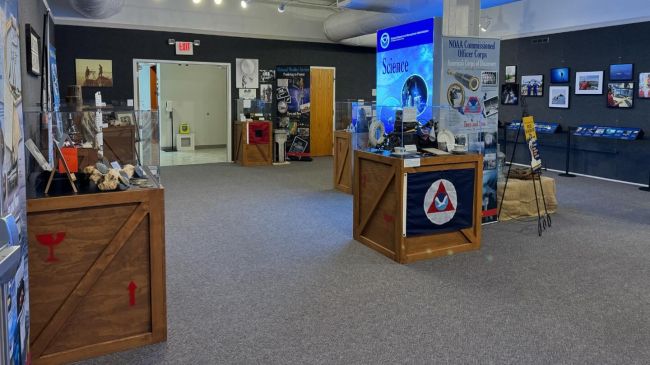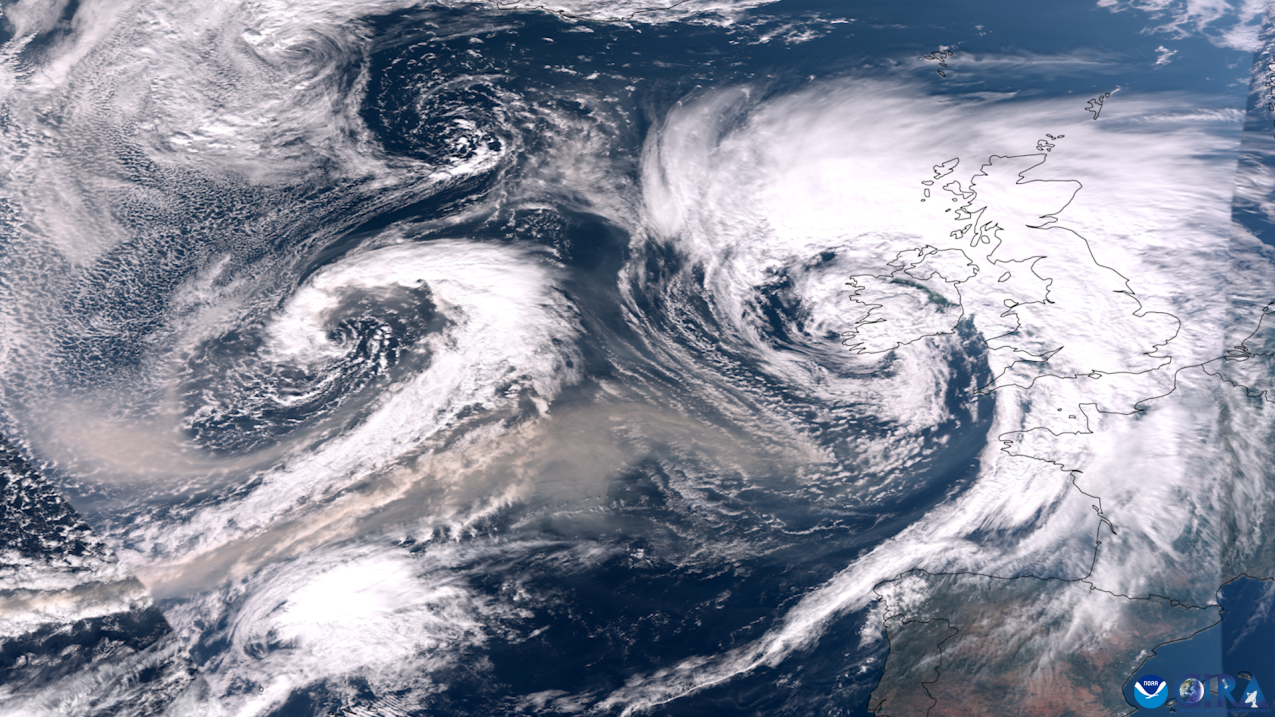
On September 27, 2023, the VIIRS instrument onboard NOAA’s JPSS satellites captured this GeoColor imagery of Canadian wildfire smoke being pulled across the Atlantic Ocean by two areas of low pressure — one swirling system can be seen in the left of this image and the other, deemed Storm Agnes by the UK Met Office, is on the right near Ireland and the United Kingdom. GeoColor imagery provides a close approximation to what you would see with your naked eye from outer space. (Image credit: NOAA National Environmental Satellite, Data, and Information Service)
From heat waves on land and in the ocean to wildfires and flooding, 2023 was a record-breaking year for climate and weather events. These events and others affected countless people across the nation, and resulted in the highest number of billion-dollar disasters in a calendar year. Amid these enormous challenges, NOAA continued to make scientific advancements that help save lives and the planet.
Learn how NOAA’s scientific research is improving lives and our nation’s economy in the newly released 2023 NOAA Science Report. The report focuses on advancements that help create a climate-ready nation, reduce the impacts of hazardous weather, promote sustainable use and stewardship of ocean and coastal resources and ensure a robust research and development enterprise.
Here are 5 highlights from the 2023 NOAA Science Report:
1. Air quality alerts get a big helping hand from NOAA satellites
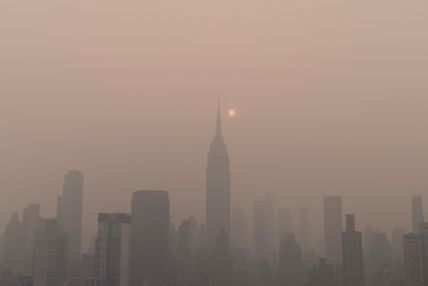
When wildfires in Canada sent plumes of smoke over the Eastern U.S. last June, NOAA’s satellite observations provided critical data by informing air quality alerts to protect public health. NOAA estimates that more than 86 million people experienced fine particulate pollution levels higher than the federal health standard.
2. Zooming in for a closer look at hurricanes for better forecasts
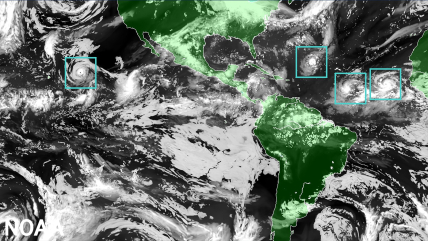
Better forecasts can help people prepare for increasingly extreme weather — and may save lives. Thanks to NOAA’s new Hurricane Analysis Forecast System, scientists can now “zoom in” for a close-up view of hurricanes and better predict their path, intensity and potential for rapid intensification. The new forecasting system became operational in the 2023 hurricane season.
3. Putting research into action: NOAA study leads county to improve flood planning

A NOAA-funded study found that flood risks in Los Angeles County were comparable to some of the most damaging hurricanes in U.S. history. These risks were disproportionately higher for underserved communities. When these populations were impacted by flooding, they faced greater challenges recovering from the disasters, further exacerbating socioeconomic inequities.
The study promptly caught the attention of the Los Angeles County Board of Supervisors, and was referenced in a unanimous decision to address flood risk inequities and improve plans to prevent flooding.
4. Partnering with anglers solved a salmon mystery
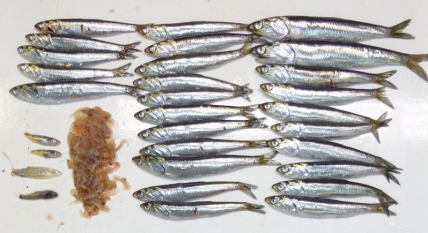
NOAA led a multi-agency team to monitor, detect and mitigate the negative impacts of thiamine (vitamin B1) deficiency — a global threat to marine life — on California’s salmon and steelhead. Scientists and anglers worked together and discovered that salmon were eating an abundance of northern anchovy, containing an enzyme that may have contributed to the thiamine deficiency. These observations and additional research led scientists to effective methods of preventing mortality in young salmon and predicting impacts on young and adult salmon later in their life cycle.
5. Robotic vehicle breaks the ice for a fresh look down into the Great Lakes

What is life like under the ice of the Great Lakes during winter? NOAA and partners tested an autonomous underwater vehicle in Lake Michigan with a goal of using it under lake ice to collect ecological and water quality data. Fully understanding year-round biological processes of the Great Lakes now and in the future is key as climate change impacts seasonal ice cover and lake ecosystems.
For more information, contact monica.allen@noaa.gov.


